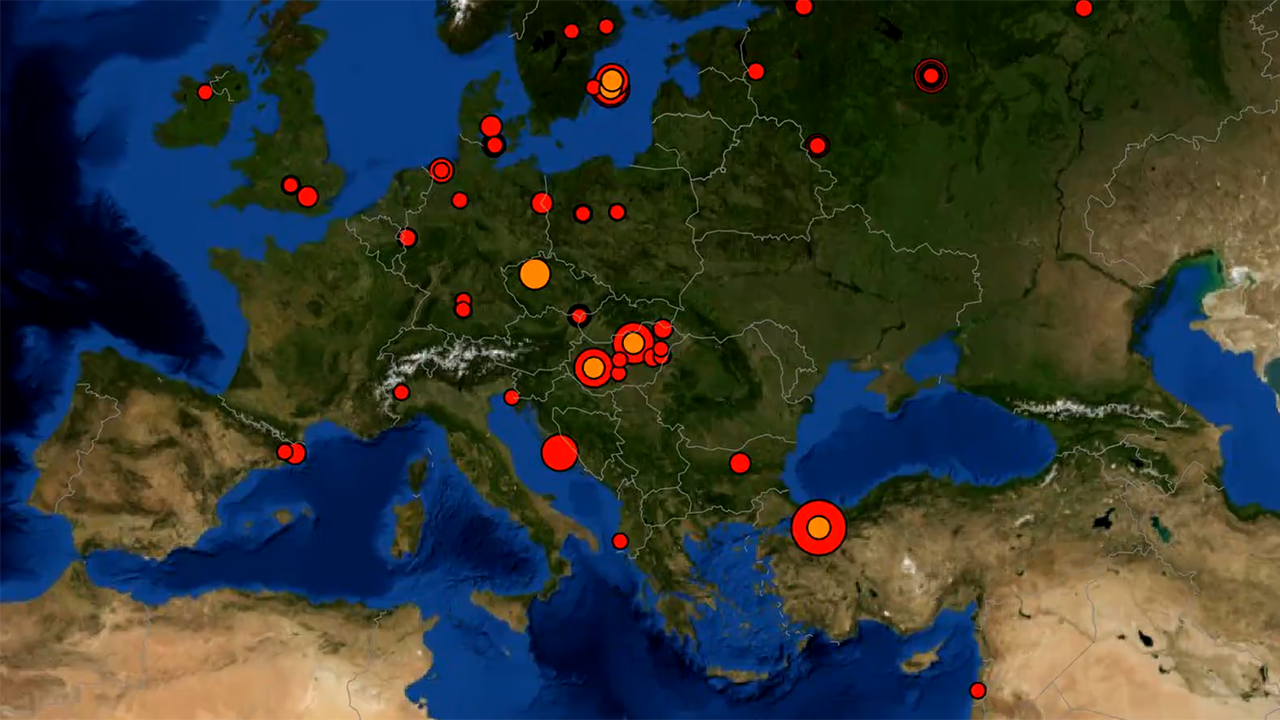I recently had my DNA tested and the results were absolutely fascinating! It turns out that my genetic heritage is a rich tapestry of various ancient and medieval populations. According to the genetic analysis, I have ancestral ties to the Early Slavs, Scythians, White Croats, Kievan Rus, Ostrogoths, Vikings and Proto-Hungarians.
Early Slavs – 22.6%
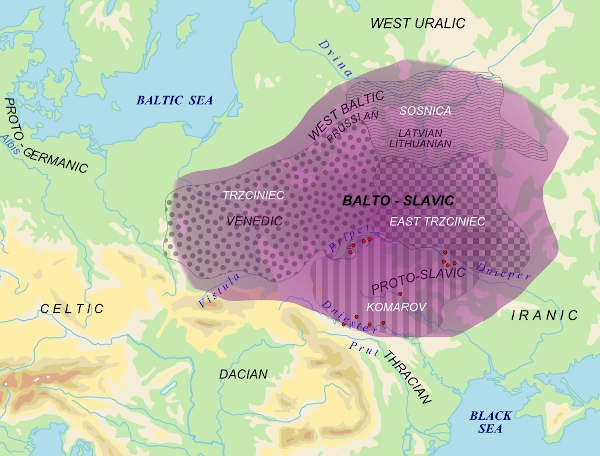
The early Slavs were a diverse group of tribes who lived in Eastern Europe between the 5th and 10th centuries and created the foundation of Slavic nations to come. The Byzantine historian Procopius of Caesarea described these people as tall and especially strong, with reddish auburn hair. He reported how they would fight on foot carrying shields and spears, preferring ambush and guerrilla tactics to open warfare. Byzantines would employ these Early Slavs as mercenaries. However, various nomadic horseback tribes such as the fierce Scythians, Sarmatians and Alans were on the Eurasian Steppes around the Black Sea and absorbed into the Slavic population over time. Such close contact with these societies transformed Slavs into very skilled horsemen. Use of cavalry enabled the Slavs to expand rapidly southwest into the Balkans, the Alps and northeast toward the Volga River. Typically these early Slavic nations were known to have lived in a democracy avoiding rule of any single chief. Settlements were not uniformly distributed, but rather found in clusters which were linked by familial or clan relationships. The first historical Slavic state was founded by Samo, followed by Bulgaria in 681 AD, followed by Great Moravia, Carantania, Pannonia, Croatia, Serbia and the Obotrites.
Scythians – 20.1%
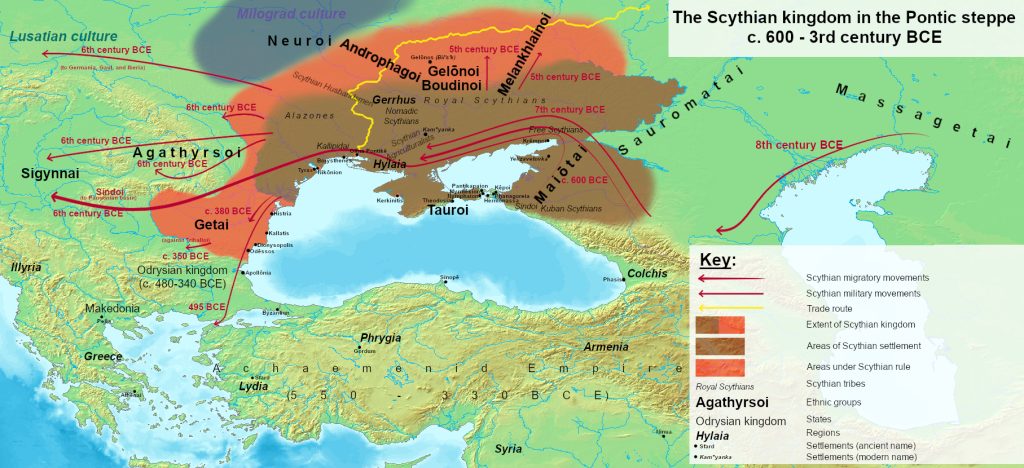
Scythians had a reputation as the epitome of savagery and barbarism – they were among the earliest peoples to master mounted warfare. They lived in tent-covered wagons and fought with composite bows shot from horseback. With great mobility, Scythians could absorb the attacks of more cumbersome footsoldiers and cavalry, just retreating out of range. Various barbed and poisoned arrows would be used. Western Scythians were based in modern-day Ukraine, Southern Russia, Romania and Bulgaria. Scythians obtained their wealth from the control over trading slaves, grain, wheat, flocks and cheese.
Physically they appeared Europid although some had Euro-mongoloid phenotypes. Most descriptions mention them as red or fair-haired with blue-grey eyes. Scythian sites show rich and brightly colored textiles, leatherwork and woodwork, as well as tattooing.
White Croats – 16.8%
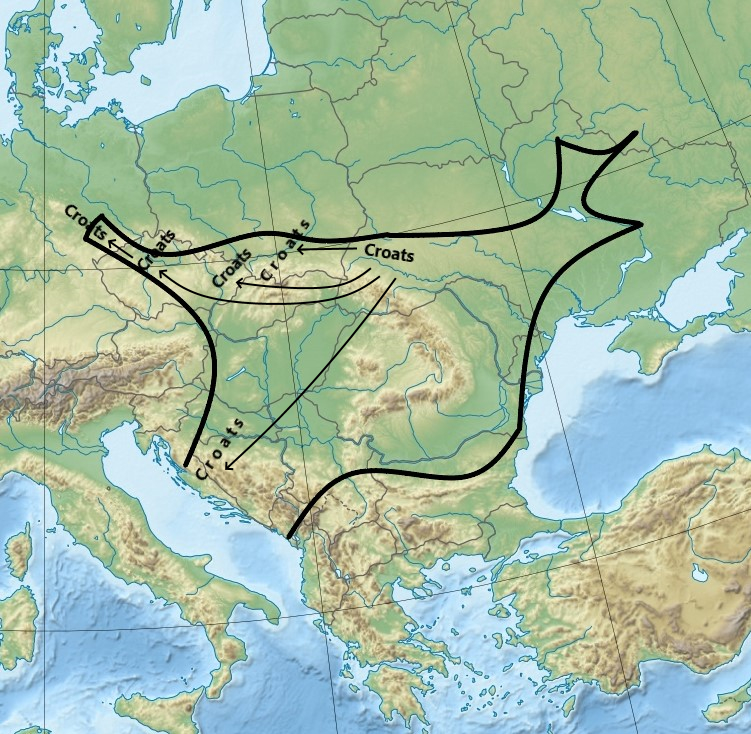
The White Croats are an early Slavic tribe who formed between the 3rd and 5th century century in Lesser Poland during the peak of the Huns. They are thought to be one of the oldest and largest Slavic tribal formations until the 6th century. Some believe they were ruled by Sarmatian elite or Slavicized Sarmatians. The Byzantine Emperor Constantine VII wrote that the Croats dwelled beyond Bagibareia where the Belocroats live now – and that a family of 5 brothers and 2 sisters came with their folk to Dalmatia and founded this land under the rule of the Avars. The Croats prevailed and killed some of the Avars – with the remainder compelled to be subject to them. From the Croats who came to Dalmatia, a part split off and took rule of Illyricum and Pannonia. They remained independent and autonomous and requested holy baptism from Rome. Czech and Polish chronicles claim the legendary Lech and Czech came from White Croatia.
Kievan Rus – 13.0%
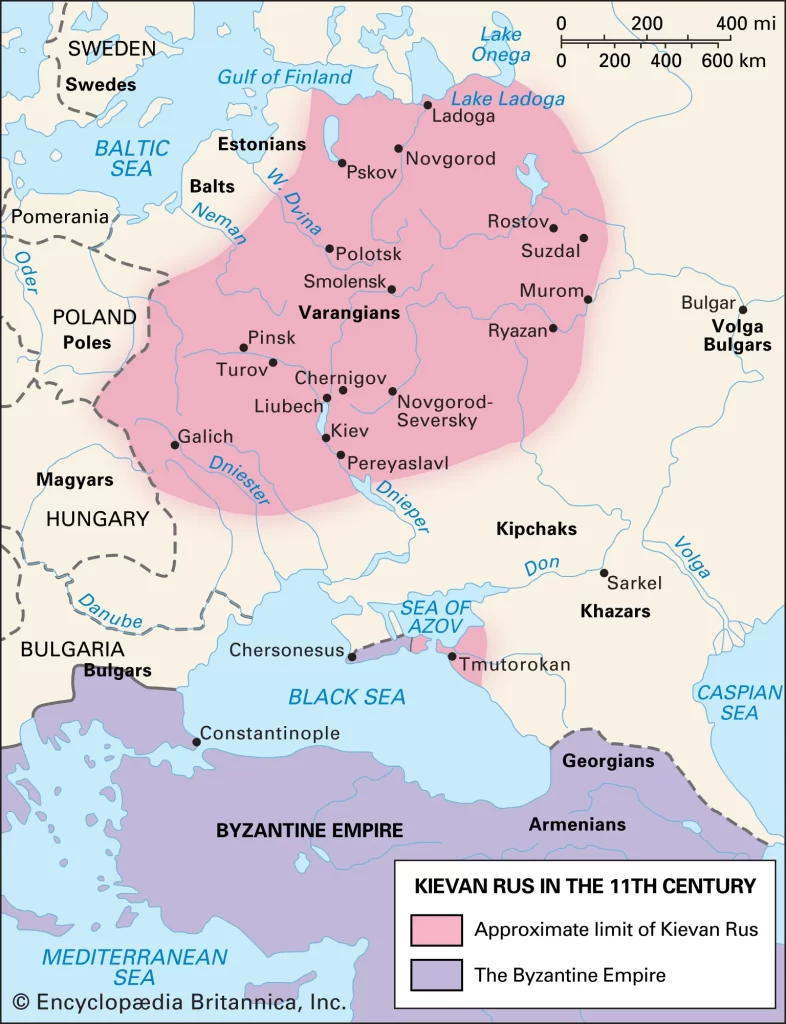
Kievan Rus (882 AD – 1240 AD) was a loose federation fo East Slavic and Finnic peoples in Europe during the middle ages, under the reign of the Varangian Rurik dynasty. At its greatest size, it extended from the Baltic Sea to the Black Sea, and as far west as Poland to the Crimea in the east.
The Kievan state prospered due to its abundant supply of furs, beeswax, honey and slaves. It was centrally located on three main trade routes of Eastern Europe. Novgorod served as a commercial link between the Baltic Sea and the Volga.
Rapid expansion to the south led to conflict with the Khazars who were allied with the Byzantines against Persians and Arbas.
The decline of Constantinople and the Crusades played a large role in the decline of the Kievan Rus. Novgorod revolted against Kiev in 1136 and became an independent city republic. The Mongol invasion marked the end of the state.
Ostrogoths – 10.5%
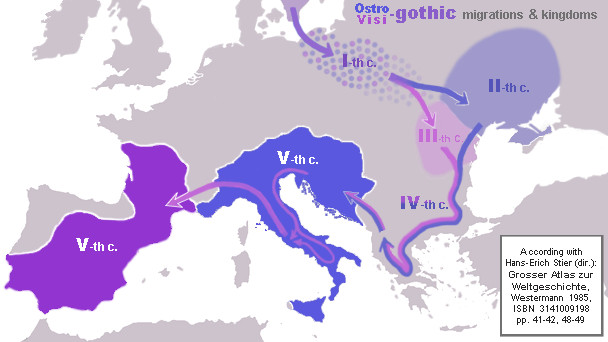
Originating from Scandinavia, the Goths of Eastern Europe were shattered when Attila and the Huns blasted onto the scene. The Gothic kingdom was split – those who crossed the Danube to enter the Roman Empire became the Visigoths. The Ostrogoths who remained in Dacia to face the Huns became their vassals. They migrated into the Roman province of Pannonia (modern day Hungary, Austria and Croatia) and fought with their Hunnic overlords against the Romans, Visigoths and their allies. When the Hunnic empire was defeated, the newly independent Ostrogoths remained in Pannonia. When the western Roman empire collapsed to the warlord Odoacer, the Byzantines looked to the Ostrogoth King Theodoric to reclaim Italy in 488 AD. After liberating Italy, the Byzantines treated Theodoric as an equal. Under Theodoric’s rule, Italy flourished and Roman laws and customs continued under Ostrogothic rule, becoming the strongest in western Europe. In 535 AD after Theodoric’s death, the Gothic war with Byzantium began and Emperor Justinian won ending the Ostrogothic kingdom.
Vikings (Swedish) – 8.1%
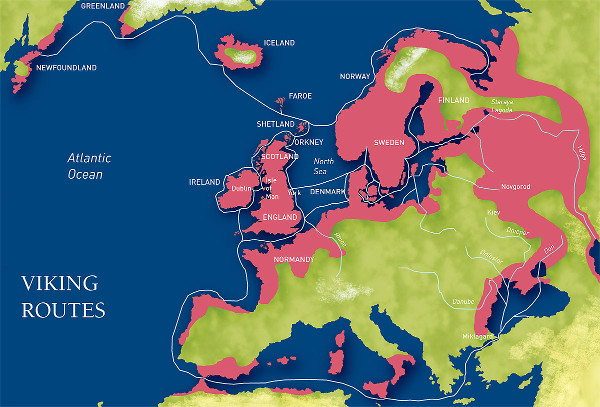
In the frozen north, a land of people clung to the ancient gods in a land whose earth would freeze over in winter and sun would hide away for months. The land bred harsh warriors with mastery of metals to fight away the greedy trolls and thieving dwarves. Sailors would brave the sea in dangerous waters fighting the storms of Thor the god of thunder. The seafaring culture started raiding further and further outside their homeland in Scandinavia. Small villages were raided at first, but once slaves and money started flowing in the Vikings became ever ambitious. The Vikings were ruthless and fearless with bloodlust only rivaled by their desire for fame. Ragnar Lodbrok was one such Viking who raided England and Paris. Eventually Vikings settled the ‘Danelaw’ in England, Scotland and Ireland and the Danish King Knut unified the whole of England.
Proto-Hungarian – 4.2%
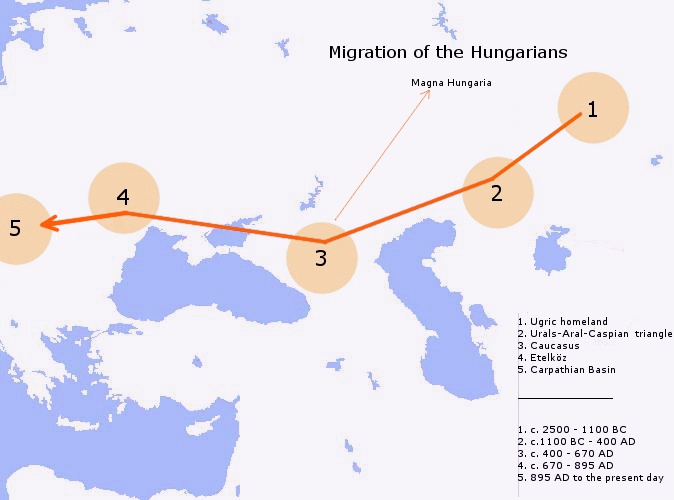
The Hungarian conquest of the Carpathian Basin was a series of events resulting in the settlement of the Hungarians at the turn of the 9th and 10th centuries. Before the arrival of the Hungarian Conquerors (or Proto-Hungarians), three medieval powers were fighting for control of the Carpathian Basin – the First Bulgarian Empire, East Francia and Moravia. Occasionally they would hire Proto-Hungarian horsemen as soldiers. These people who lived on the Pontic Steppes became familiar with their future homeland as a result. After they were attacked by the Bulgarians and Pechengs in 894, the Proto-Hungarians crossed the Carpathian Mountains and took over the lowlands east of the Danube, and then went into Pannonia. Then by defeating a Bavarian army in 907, they launched a series of plundering raids. Gradually they began settling in the Basin and established a monarchy, the Kingdom of Hungary in 1000 AD and ruled over the existing peoples of the region at this time including Slavs, Greeks, Germans, Moravians and Vlachs.
Sarmatians – 1.5%
The Sarmatians were a large confederation that flourished around the 5th century B.C and related to the Scythians. They were Caucasoid in appearance, fairly tall with long hair and beards. Reportedly many Sarmatians had reddish hair and wore long flowing robes. They would ride horseback and throw javelins while mounted. Originating in the Eurasian Steppes, they migrated westeward and dominated the Scythians by 200 B.C. They ranged from the mouth of the Danube to the Volga and bordered the shores of the Black and Caspian seas. The territory known as Sarmatia includes much of Ukraine, southern Russia and parts of the Balkans. The dominance of the region ended with the arrival of the Goths and the Hunnic invasions. Sarmatians were eventually assimiliated into the Proto-Slavic population of Eastern Europe.
Baltic Tribes – 1.0%
The Roman Historian Tacitus first mentions in 98 AD the existence of a tribe living near the Baltic Sea called the Aesti. These were a Baltic peoples, who descended from a group of Indo-European tribes who settled the area between the Vistula and southeast shore of the Baltic Sea, and upper Daugava and Dnieper rivers. The thousands of lakes and swamps helped contribute to the Baltic geographic isolation. Western and Eastern Balts began to differentiate in the later centuries BC. The Western Balts included the Brus/Old Prussians, Sudovians, Scalvians, Nadruvians and Curonians. The Eastern Balts meanwhile were living in modern day Belarus, Ukraine and Russia. As the Roman Empire collapsed, Eastern Balts were pushed to the west and Slavic tribes from the Volga appeared on the scene. Many of the Eastern and Southern Balts were assimilated and slavicized. Brus/Old Prussians were meanwhile Germanized.
The Baltic Tribes leveraged the natural landscape to build thousands of hill forts along key areas which were effectively fortified wooden pallisades which would be heavily defended. The Baltic peoples were known to be fierce warriors, excellent sailors and pirates.
Gepids – 0.7%
Gepids were a Germanic tribe realted to the Goths, described as tall and blond-haired. The Gepids fought alongside the Huns against the Roman Empire around 440 AD. Later the Gepids founded a kingdom known as Gepidia in the eastern regions fo the Carpathian basin. They helped form a coalition to fight the Ostrogoths who ruled Pannonia. They reached their peak in 537 and settled further near modern Serbia. In 546 the Byzantines allied with the Lombards and crushed the Gepids. Any remnants were defeated by the Avars in 567 who took over all the former Gepid lands.
Gauls – 0.6%
The Gauls were Celtic tribes who lived predominantly in eastern and southern France. They had a complex political system involving clans run by a council of elders. A king would have much of their powers held in check by the council. Gaul tended to be politically divided and only during dangerous times such as the invasion by Julius Caesar, could the Gauls unite under a single leader like Vercingetorix. After the Roman conquest of Gaul, the land was split into provinces and people divided into 3 groups – the Belgae (the bravest and furthest from civilization), the Galli/Celts, and the Aquitani towards Spain.
Gauls practiced animism and worshipped animals. Druids presided over human or animal sacrifices in wooded groves or crude temples. The druids were key to preserving festivals and the lunar-solar calendar. Gauls would nail heads of enemies to walls or dangle them from the necks of horses to instill fear.
Goths – 0.4%
The Goths were a Germanic tribe whose origins stemmed from the island of Scandza in Scandinavia. Over the years they slowly migrated southwards eventually to the Black Sea and into the Roman Empire. They had a written language with Runic inscriptions. It is said they worshipped the god of war and would hang human arms from trees and perform human sacrifices of prisoners. In 395 AD, the Gothic leader Alaric rose to power and had a plan to seize good farmland and monetary rewards from Romans. He became an outlaw of both the Western and Eastern Roman Empires and eventually there was a massacre of Gothic settlers near Constantinople in 400 AD. Sensing weakness with the Western half, Alaric found supporters with other outlaws of Rome – as well as runaway slaves. He camped an army outside Rome and sacked the city in August 410 AD. In the 5th century the Gothic tribes had split clearly into two Kingdoms built on the ruins of the former Western Roman Empire. The Visigoths ruled in Iberia and the Ostrogoths ruled over Italy.
Boii – 0.3%
The Boii were a Gallic tribe of the Iron Age known to inhabit at various times Cisalpine Gaul, Pannonia, Bavaria, Bohemia and Southern Germany. They first appear in history when they captured the Etruscan city of Felsina (Bologna) and made it their new capital. Ancient authors claim the Boii arrived in northern Italy by crossing the Alps but there is no evidence of them living in Gaul – their origins are believed to be Southern Germany or Bohemia. In the second half of the 3rd century BC, the Boii allied with other Cisalpine Gauls and Etrsucans to fight against Rome. They also joined Hannibal in killing the Roman general Lucius Postumius Albinus in 216 BC and turned his skull into a sacrifical bowl. The burial rites of the Boii shows many similarities with Bohemia and unlike Gauls they did not wear torcs. Ultimately after they were defeated by the Romans the tribe disappeared – many are thought to have ultimately settled in Slovak and Hungarian lowlands.
Belgae – 0.1%
The ethnic name Belgae comes from the Proto-Celtic word Bolgi which means “The People who Swell with anger or battle fury”. These Celtic people lived north of the Gauls and Aquitani and differed by language, customs and laws. Caesar considered them to be the bravest of the Gallic populations as they were furthest removed from the refinement and civilization of Rome – as well as constantly warring with the Germanic tribes to the East. Caesar himself suffered his greatest defeat at the hands of the Belgae but finally subdued them in 57 BC. Belgae tribes also settled in Britain populating many parts of the lowlands with the key centers in Colchester, St. Albans and Silchester. These settlers introduced the heavy plow to the region which greatly expanded the useable farmland.
Data are from mytrueancestry.com.
